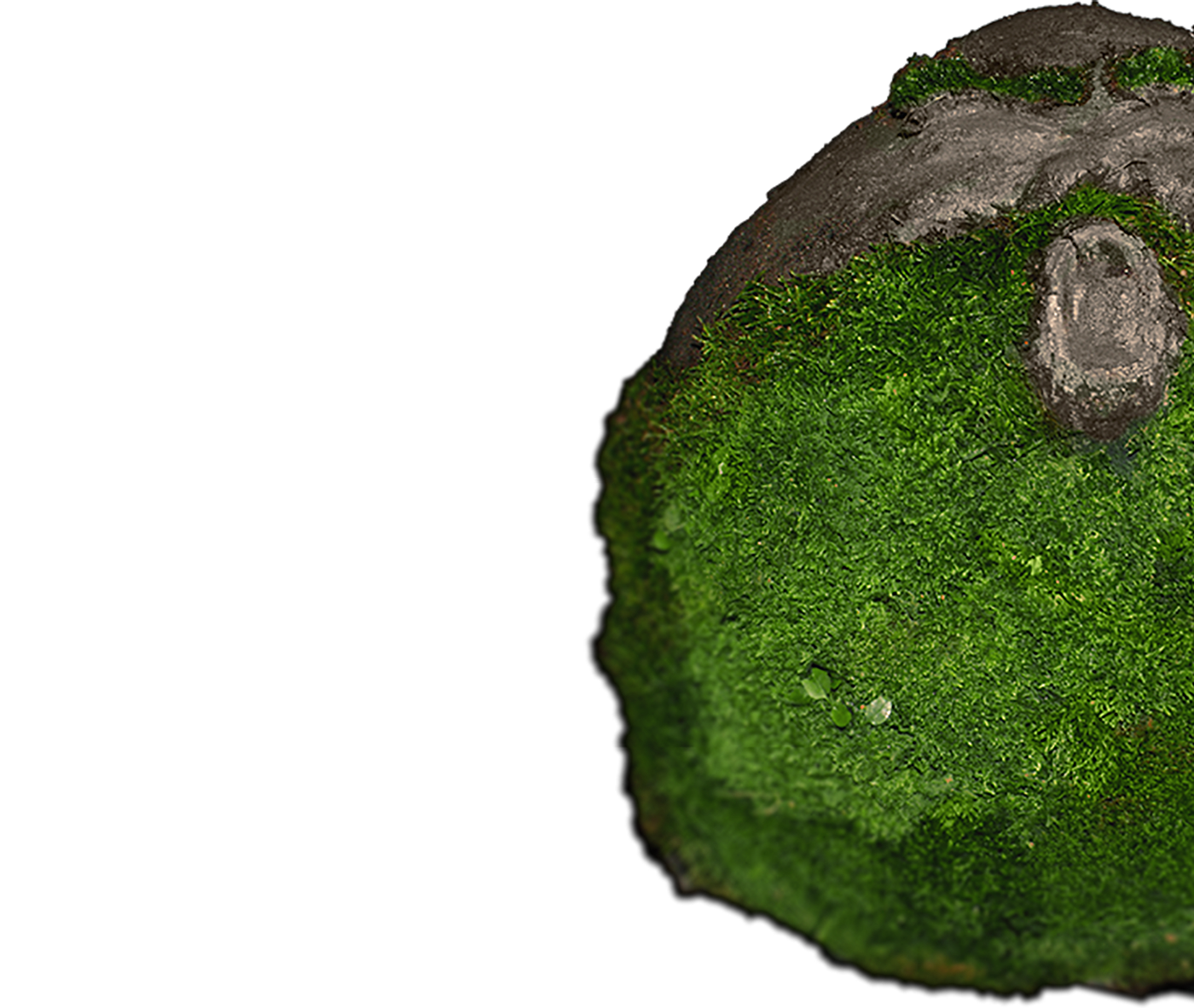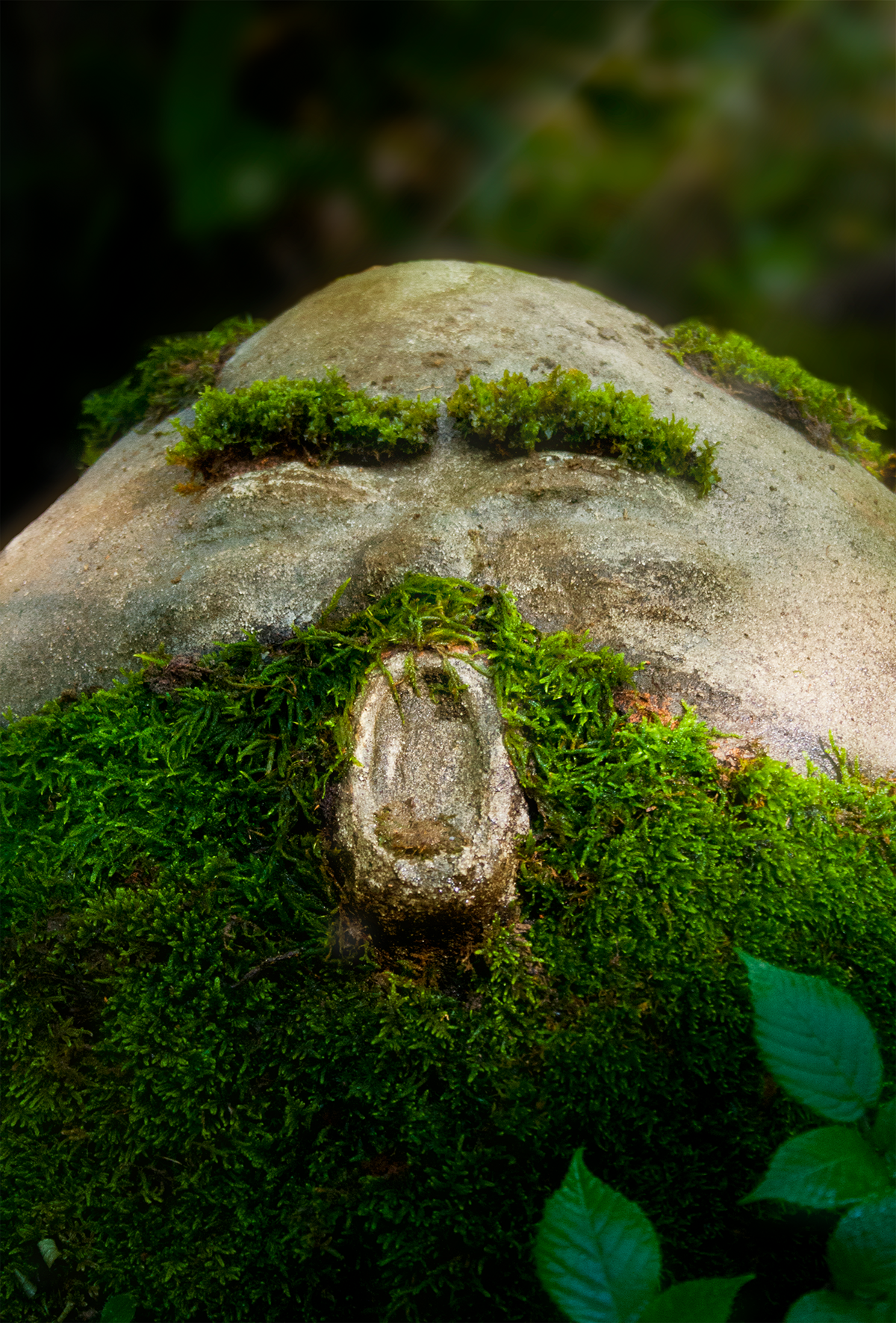
The inspiration for this project are the ancient antropomorphic figures of different cultures, from the norse myths to the japanese spirits, from mesopotamic artifacts to primitive rapresentation of gods and goddess.
As result, were born three cartoonish moss-haired heads, each of them with a different expression and mood.
This work want to be part of this imaginary, but not taking itself too seriously.
They look solid, heavy stones, but they hide a lighter polystyrene inner. It's a modern and cheap material, not as noble as stone, but gives to the work an unexpected lightness.
And they obviously aren't ancient as they want to seems. Beside, neither the eldest statues were since they're born.
This imitation doesn't want to be a disrespectful mockery, but a parodistic homage to deeper human will.
The spirituality, as the life growing on them, is still present.
The antique look and the moss shapes on these faces are made up by the artist but it will be completed by nature which will keep modify and reshape the statues, covering them with an authentic layer of time.

Rakan, stone statues representing the disciples of Buddha in the buddhist temple of Otagi Nenbutsu-ji, Kyoto. Inside the temple are more than 1200 of them.

Figures of Berserkers made from walrus ivory. They were champion Vikings and legendary norse warrior.
The project
The basic shape was modeled from a polystyrene block. Then it has been covered with concrete and stained with dirt and sand.
At last, the moss has been applied following the face traits.
At last, the moss has been applied following the face traits.








Thanks also to Ieva Mezule and Krisjanis Mezulis for Leafy, the free font i could use for this presentation. Here their work!

